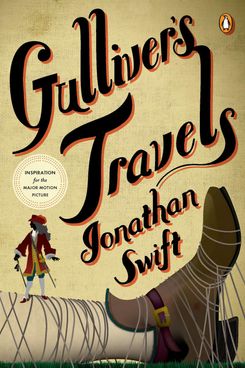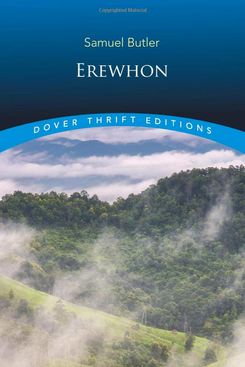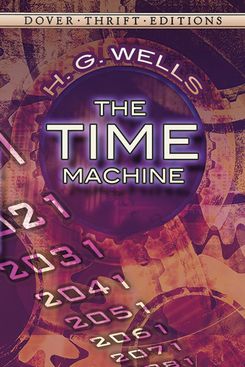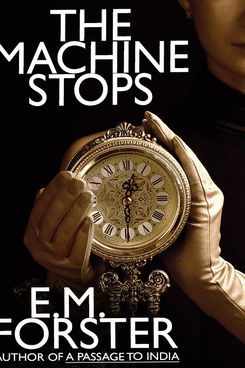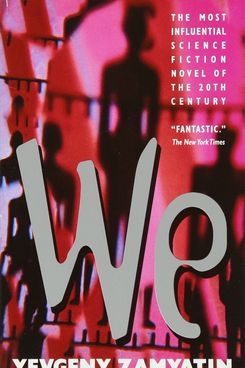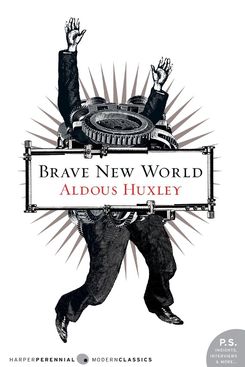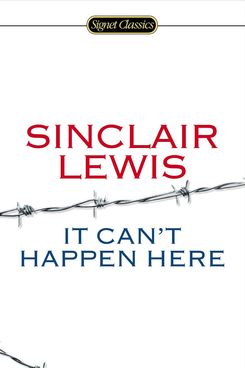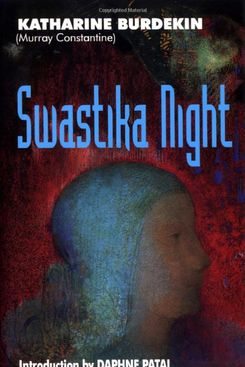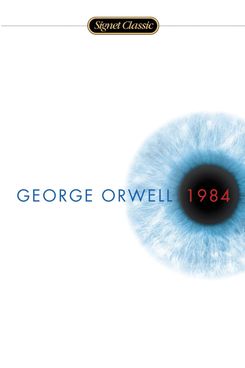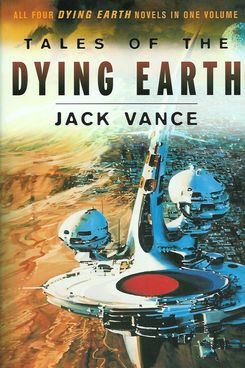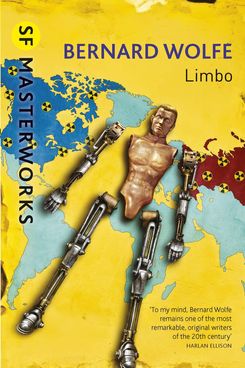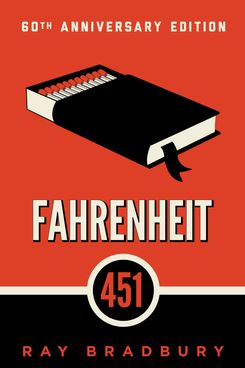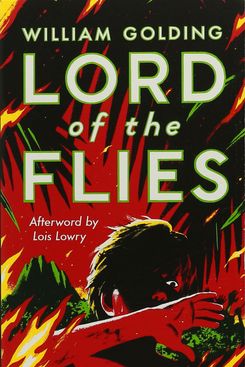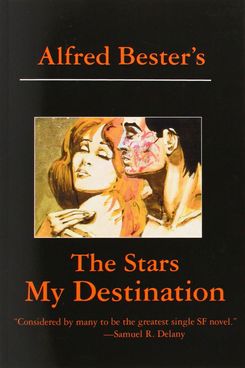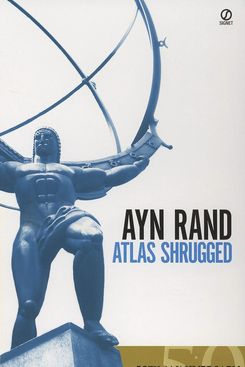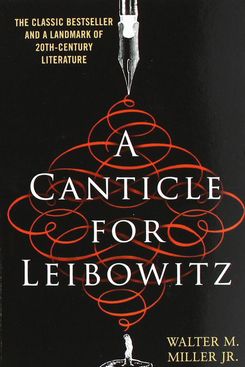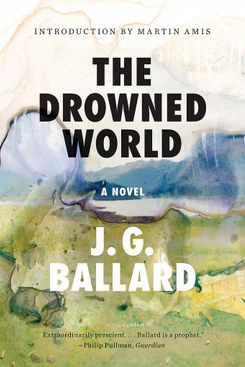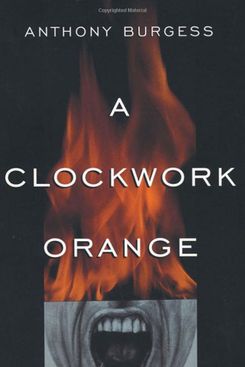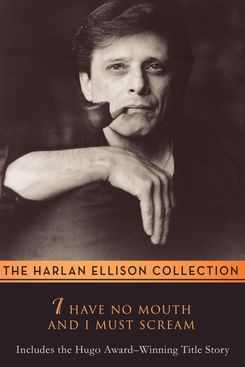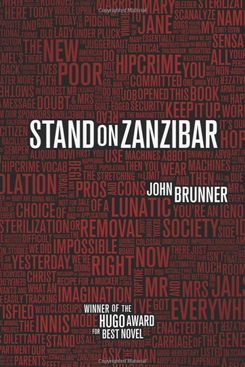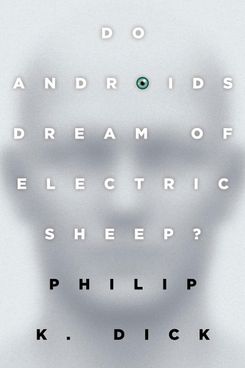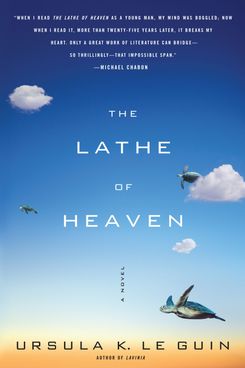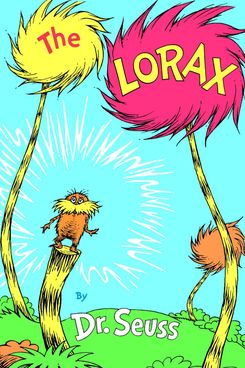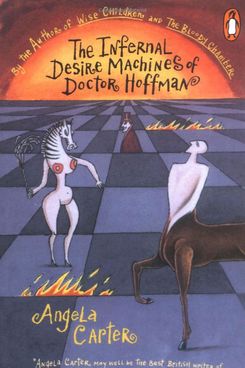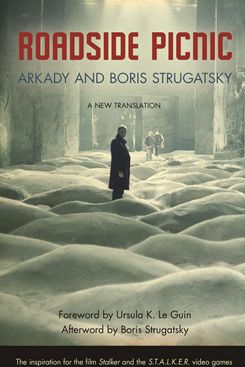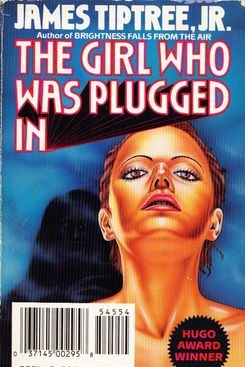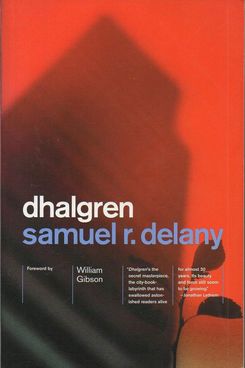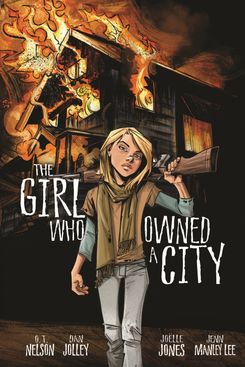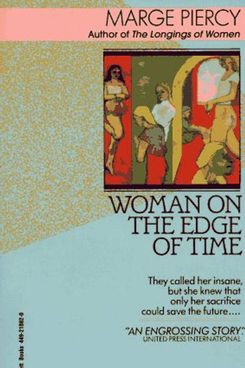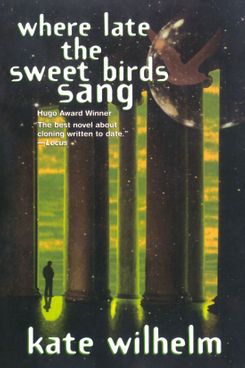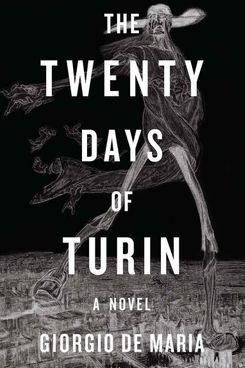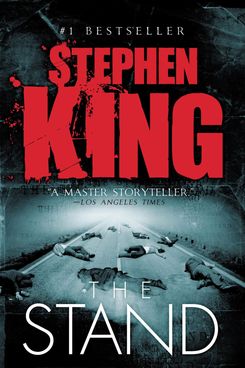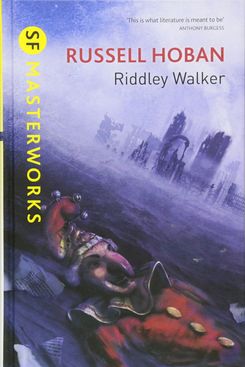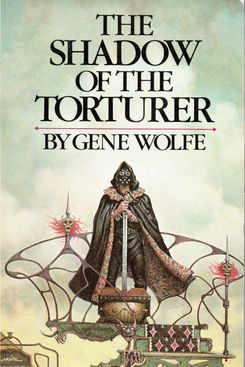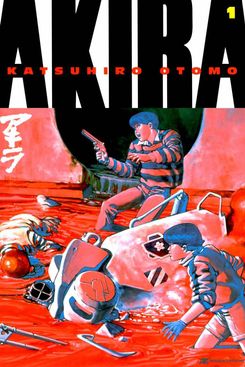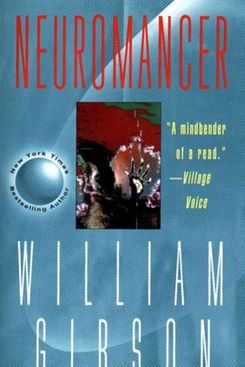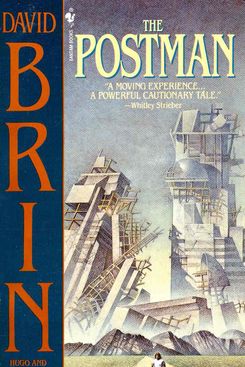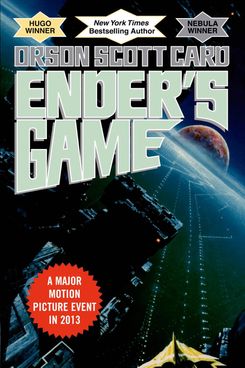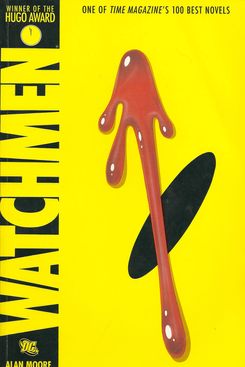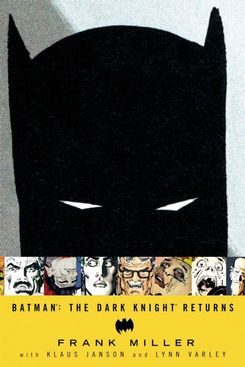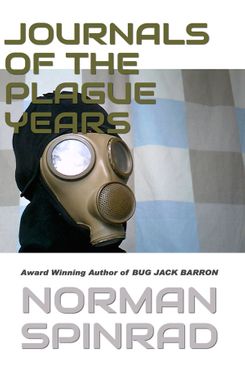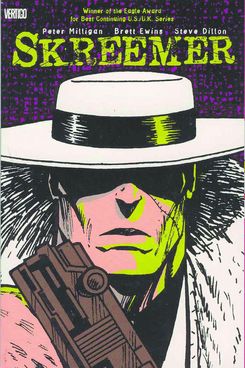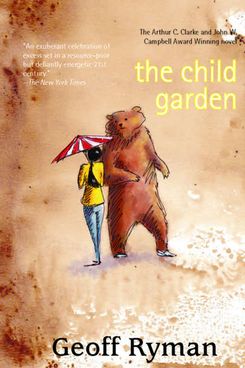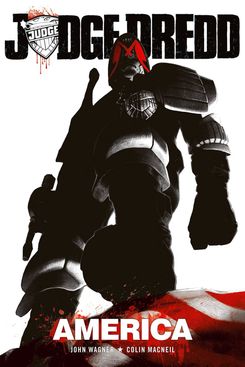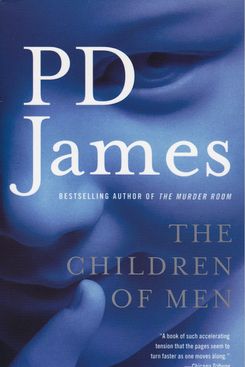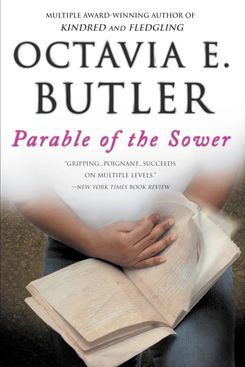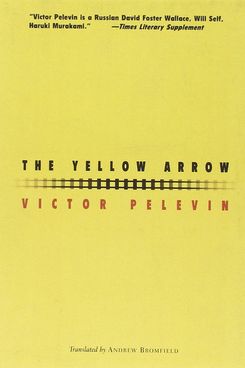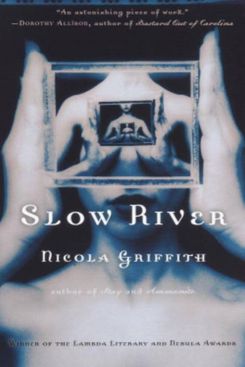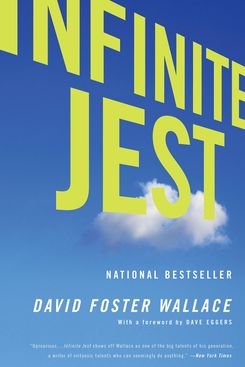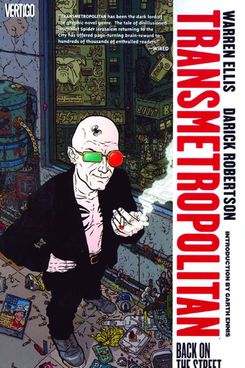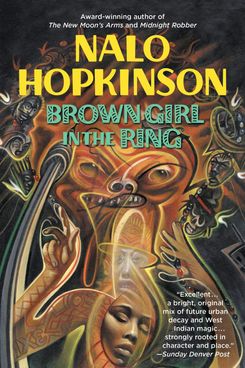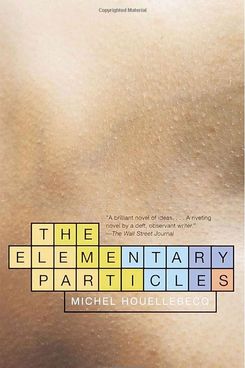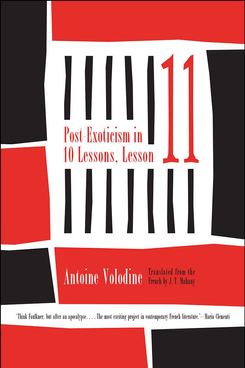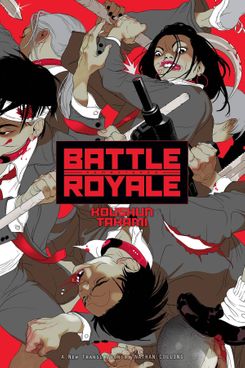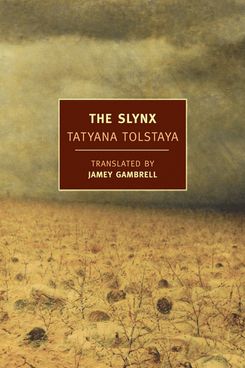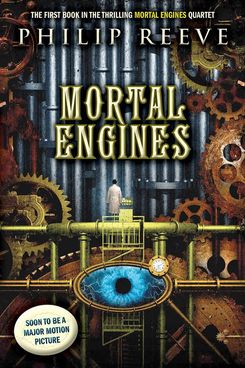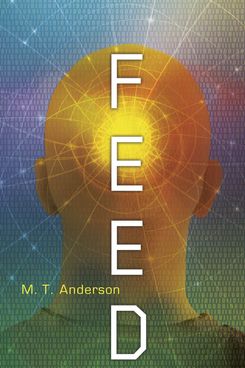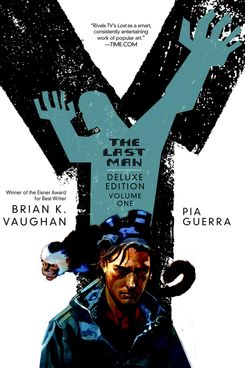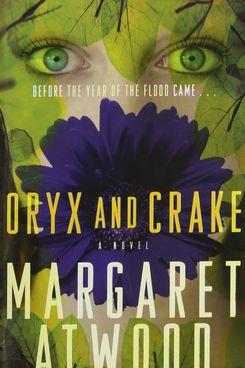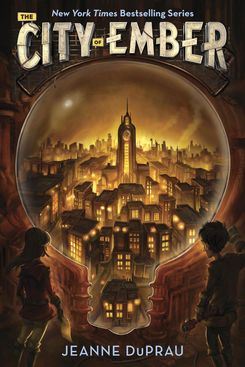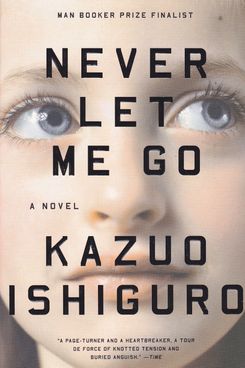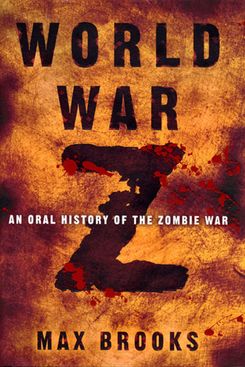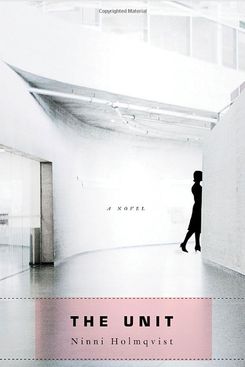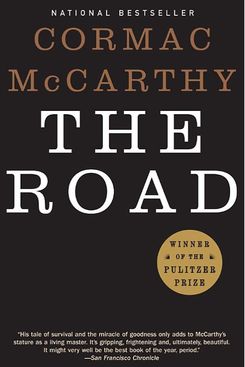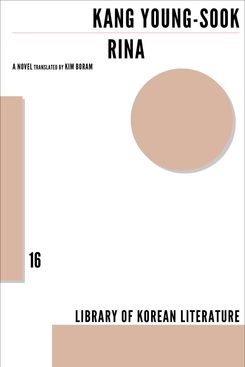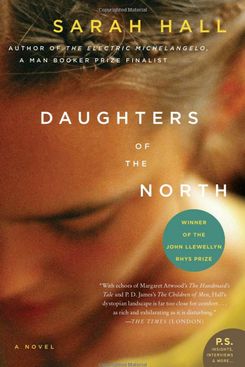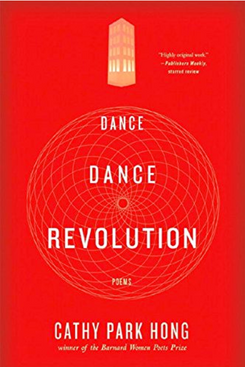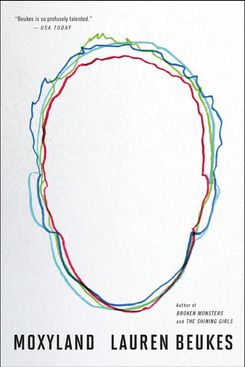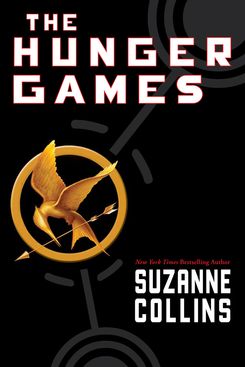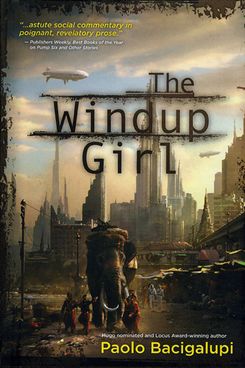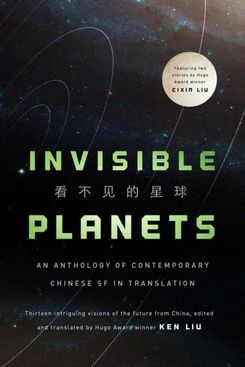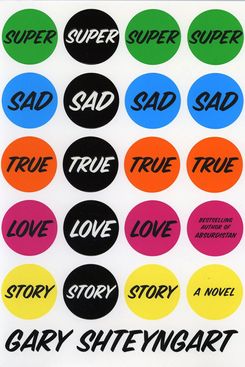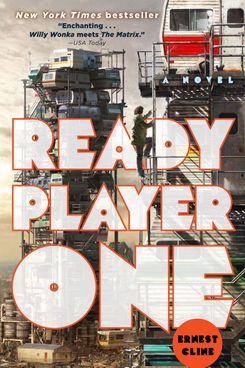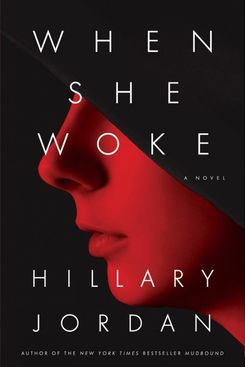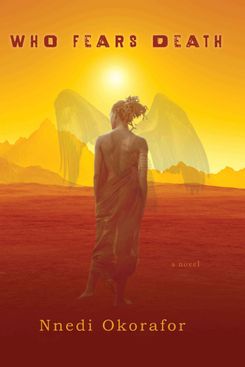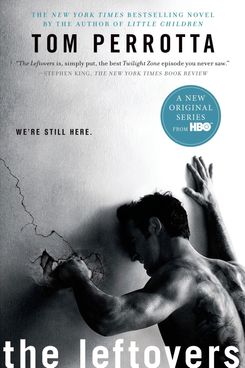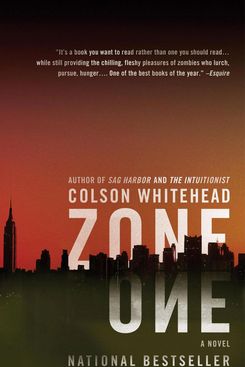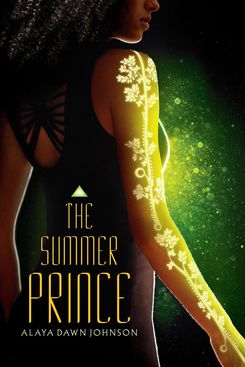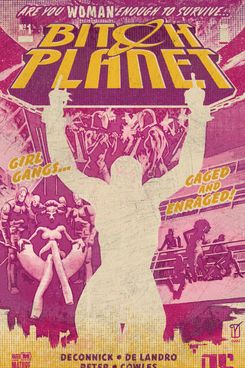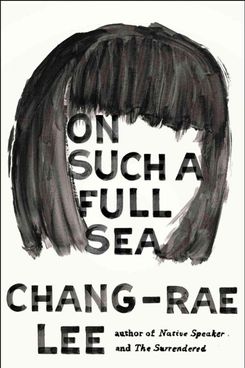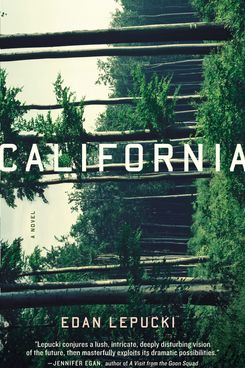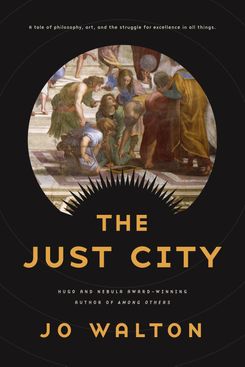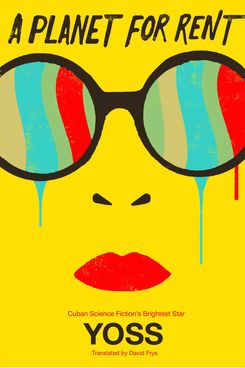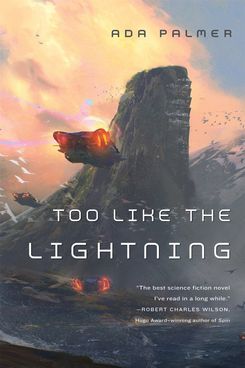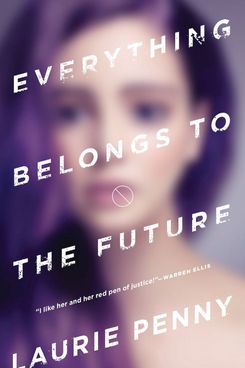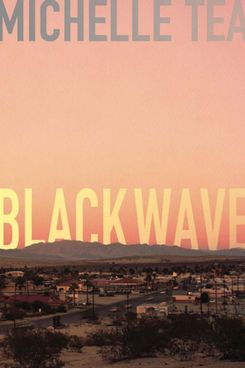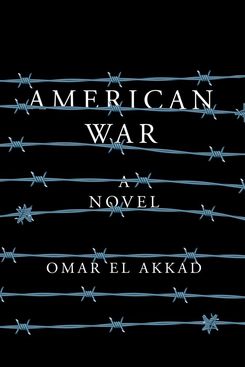We may or may not be living in a dystopian age, but we are certainly living in an age of dystopias. At every turn in a bookstore aisle, you’re increasingly likely to stumble across a vision of our world, through the looking glass. You’ll find the classics — your Orwells, Huxleys, and Atwoods — but you’ll also find a rising crop of new entries into the dystopian canon, from younger authors with fresher concerns about what, precisely, could spell our doom. They don’t just appear in the sci-fi section, either — dystopian fiction is firmly ensconced in book-club-ready literary circles, as well. It’s fashionable to be pessimistic.
It’s in this spirit that we assembled a group of readers to put together a list of some of the greatest works of dystopian literature, as part of Vulture’s Dark Futures week. We received guidance from Jenny C. Mann and Ursula K. Heise, professors of English at Cornell and UCLA, respectively, both of whom study dystopian literature, and limited our selections to books with some connection to Earth. Beyond that, the sky was the limit. There are some familiar faces, but we also wanted to pluck from unexpected corners: You’ll find literary fiction, young-adult works, graphic novels, realist tomes, some books written long ago, and others published in just the last few years. We skew toward the recent, as the term wasn’t even invented until the 19th century and has only in the last half-century or so come into vogue.
That said, we’ve done our best to also put the spotlight on works from throughout literary history and pay homage to the early influencers. Heise cites Jean-Baptiste Cousin de Grainville’s The Last Man (1805) as the first end-of-the-world scenario. Mann points to the utopian works that have informed many of the books on our list — together, Thomas More’s Utopia (1516), William Shakespeare’s The Tempest (ca.1612), and Jonathan Swift’s Gulliver’s Travels (1726) introduced the dominant forms and themes of the genre, which Mann sums up as: “The creation of alternate societies through the negation of despised aspects of the real world, the use of social engineering to make people ‘good,’ the difficulty of distinguishing between the civilized and the barbarous, the use of frame stories that pretend as if the document you are reading ‘really happened,’ the confusion of reality/fiction and truth/lies, the purpose of technology in a perfect society, and the question of who counts as ‘human.’” These books are all part of the same wary family and, taken as a whole, they provide a look not just at the power of a literary mode, but what we fear we are capable of.
Contributing Authors: Tara Abell, Peter Berard, Tobias Carroll, Maddie Crum, Jason Diamond, Maris Kreizman, Abraham Riesman, Samantha Rollins, Dana Schwartz, Kathryn VanArendonkIllustration by: Francesco Francavilla
In our collective abridged accounts of Gulliver, we tend to remember the tiny people, and then the big people, and maybe the smart horses. But it’s a messier and stranger novel than you may recall from high school. After finally discovering what he thinks is a peaceful, reasonable civilization, Gulliver returns to England. He’s spent too much time in a utopia, and now he can’t tolerate the company of people. Far from a pat conclusion about humanity, Gulliver’s story ends in confident, uncomfortable ambiguity — is England the real nightmare, or is Gulliver a fool? Unlike so many of the dystopias that follow in Gulliver’s wake, there’s no hopeful gesture toward a better future. There’s just anger, misanthropy, and conversations with horses. — Kathryn VanArendonk
The Last Man is a very early example of one of the most familiar, well-worn arcs in later dystopian imaginings: A plague arrives and wipes out all of mankind except for one lonely survivor. Today, we expect that as the opening storytelling salvo. (“Everyone died … now what?”) For Shelley, the events prophesied by the book’s title take the entire novel to come about, and it’s only at the end that we’re left with Lionel Verney, coping with his fate as the last person alive. Until that ending, it’s an expansive, mixed, far-reaching novel, full of love and war and shades of biography, both globally apocalyptic and highly personal. — KV
Like many dystopian writers, Butler takes a contemporary idea about how the world works and extends it to a logical extreme. For Butler, writing in the late-19th century, that theory is Darwinian. His protagonist stumbles upon a previously undiscovered land that implements natural selection as social policing: Illness and physical maladies are considered criminal and result in severe punishment and isolation, while crimes of amorality are treated as pitiable, temporary ailments. That alone makes Butler’s novel an important indictment of human cruelty, but Erewhon is most fascinating for Butler’s pioneering idea that machines might one day wake up. “There is no security,” Butler wrote, “against the ultimate development of mechanical consciousness …” Move over Asmiov, Butler got there first. — KV
It’s strange that Wells’s The Time Machine hasn’t featured more prominently in the discourse about our times. The book’s anonymous Time Traveler makes his way from Wells’s 1890s to 802,701 A.D., where he encounters a civilization starkly divided between the childlike, hedonistic Eloi and the apelike, cavern-dwelling Moorlocks. The Moorlocks provide for the Eloi’s existence, then eat them for sustenance. One would figure the parallels to today would present themselves — the effete elites living off a bitter working class no one wants to look at … alas, our elite still seems able to fight off being dinner, for now. — Peter Berard
Before Mark Zuckerberg, before Steve Jobs, before Alan Turing, Edwardian novelist E.M. Forster foresaw our obsession with technology. In this shockingly prescient short story, all communication is done through screens, humans are isolated in cells below ground, and ideas are only shared by an omnipresent Machine that is worshiped as a god. Long before Kubrick’s monolith, Forster perceived how an overreliance on computers could lead to an isolated society, a homogeneous world, and a disregard of the truth. “In time,” the story warns, “there will come a generation that had got beyond facts.” Sound familiar? — Tara Abell
Your high-school English teacher probably taught you that 1984 and Brave New World were the pioneers of the sci-fi dystopia. But both Orwell and Huxley were influenced by an earlier, lesser-known Russian novel, written in 1921, smuggled into the U.S., and published in 1924. We tells the story of a future in the “One State” in which industrial efficiency is taken to its logical extreme: Humans aren’t considered people, but ciphers with names like D-503 and I-330, and the world they live in — down to the literal glass apartments they inhabit — has been mathematically engineered to eliminate unpredictability (don’t worry, if you fall ill and develop an imagination, an operation can be done to remove it). We is worth reading for its genre-pioneering pedigree, but the real star here is Zamyatin’s hallucinogenic prose — a style he likely developed as a by-product of his alleged synesthesia — which is so vivid and surprising, it keeps the reader pleasantly off-balance. The One State would surely hate it. — Samantha Rollins
In 1932, Huxley published a book about a society in which the opportunities to distract yourself with small pleasures are endless. If you didn’t read it in high school, it’s worth reading now, if only to revel in his foresight. Due to the mass use of soma — a harmless narcotic — and the value system its residents are allegiant to, everyone born into Huxley’s London happily accepts the caste they’re assigned to. The divvying up of roles — there’s Alpha and Beta, and the lower castes, Gamma, Delta, and Epsilon — happens in vitro and is rarely protested against due to from-birth conditioning. The genesis of Brave New World was Huxley’s visit to America, where he saw that people could be mollified by advertising slogans, brand loyalty, and other capitalistic tenets. — Maddie Crum
As the old saying goes, “history doesn’t repeat itself, but it does rhyme” — and Lewis’s It Can’t Happen Here is proof. This 1935 satire chronicles the career of fictitious U.S. politician Buzz Windrip, a populist senator who wins the presidency. As it turns out, he’s a bit of a fascist, but more frightening than his actions is the speed — and eagerness — with which Americans join him in his authoritarian crusade. Lewis understood the American soul better than most, and he makes a compelling case that fascist tendencies would make a horrifyingly good fit for our polity if presented with the right amount of good, old-fashioned patriotism. — AR
Written 12 years before 1984 and published under a male pseudonym, Burdekin’s feminist novel features many of the hallmarks of that other classic dystopia, with one striking difference: It recognizes the position of women. Critics of Orwell have long lamented his lack of development of his female characters, but here is a novel that not only includes the female role in a dark future, but scrutinizes the “Holy Mystery of Maleness” and acknowledges how violent a world run by men can be. By creating a world in which women are enslaved and treated no better than animals, Burdekin drew a blueprint for dystopian literature, while never forgetting that misogyny would be an integral architect. — TA
There’s something charmingly quaint about 1984 today. Oh, those were the days, weren’t they, when it seemed plausible that the world might fall to an overweening set of managerial states where everything moves smoothly so long as you surrender your freedom and get with the program. Nowadays, Orwell’s masterpiece is a fascinating artifact of a different era and its different worries. That said, even ol’ George couldn’t have predicted how trendy doublethink would become in 2017. Plus — and the novel never really gets enough credit for this — it’s just a cracking good yarn, full of terrifying twists and turns and marvelously deft world-building. — AR
Like the world of Cartoon Network’s Adventure Time (which was almost certainly inspired by it), Vance’s Dying Earth had already been through numerous apocalypses. But it appears to be up for good, as we encounter it way at the end of the Sun’s lifespan. Humanity’s numbers wane, and the planet is steadily overrun by a crazy-quilt of strange creatures, some alien, some bio-engineered by long-dead societies. Wizards roam the land as well — that is, people who have mastered a small selection of reality-warping formulae that now-extinct super-advanced civilizations had developed. (If you’ve ever played Dungeons & Dragons and wondered why your wizard character only knows a few spells at a time, you can thank Vance.) “Men are as plastic as wax,” was one of Vance’s mottos, and the endless ways people in his worlds adapt themselves to their environments and power structures were his main source of inspiration. — PB
Limbo begins as stories of scientific visionaries and/or mad scientists often do: with their central character in a self-imposed exile far from the conflicts of the world. Soon enough, the scientist in question, Dr. Martine, ventures to the Inland Strip — a.k.a. what remains of the United States after a third World War — and discovers that a pacifist movement has arisen whose adherents remove their arms and legs in favor of high-tech replacements. There’s a postmodern glee at work here: One crucial plot point is advanced via a found and annotated document, for instance. Wolfe’s novel posits a dystopia like no other, visceral and cartoonish in equal measure. — Tobias Carroll
There’s a hunger that propels Ray Bradbury’s seminal 1953 novel. Like a play told in three acts, the story is fueled first by protagonist Montag’s desire to burn outlawed books, then by his appetite to read their banned pages, and finally, by his determination to keep the legacy of the printed word alive. The story’s most powerful lesson is the one that Montag himself grasps in the end: Learn from the dead; study what came before; history has a habit of repeating itself. It was a pleasure to read. — TA
You know a book has had lasting impact when its plot can be used to describe a type of situation. In this case, Golding’s seminal 1954 tale about a plane full of barely teenage boys forced to try to govern themselves after crashing somewhere in the Pacific is what we think of whenever a group of people try to self-govern, and things fall apart in spectacular, terrifying fashion. The book works with the idea that, no matter how much we may want peace, some among us crave power. And that craving, “the darkness of man’s heart,” can turn into war and disaster. Yet in a strange twist of events, from Survivor to Lost, that very basic message has somehow been turned into entertainment for the masses in the 21st century. — Jason Diamond
The world of The Stars My Destination was ruined not by nuclear war or environmental devastation, but by people figuring out how to teleport, or “jaunte,” to use the novel’s term. It’s now around the 24th century, and gangs of jaunters rove the land, looting and killing. Prefiguring cyberpunk in the mid-1950s, Bester depicts a world ruled largely by giant multi-planet corporations run by decadent elites, hoarding their wealth away from the jaunting gangs. It is this world that the book’s hero, Gully Foyle, a simpleton and criminal left for dead in deep space, disrupts by becoming the first man who can teleport to destinations he had not previously seen. This makes him a hot commodity, and various forces attempt to snatch him on behalf of one or another megacorp or power player. Foyle eludes them all, in large part through his psychotic devotion to extracting violent revenge for being marooned. — PB
To Rand and the generations to follow that would study and embrace her work, dystopia meant an America — and world — where socialism and big government were the norm. Clocking in at over 1,000 pages, and with almost as much page space dedicated to explaining Rand’s Objectivism philosophy, Atlas Shrugged is a slog. But it’s an interesting one to attempt. What 1984 and The Handmaid’s Tale might be to some schools of thought about where we’re at and where we could be going as a culture, Atlas Shrugged is to an entire political mind-set, and that influence doesn’t look to be waning anytime soon. — JD
Abe’s fiction frequently summons up images of alienation, oppressive societies, and the way that interpersonal conflicts can take on aspects of the societal — take 1962’s The Woman in the Dunes, which chronicles the bizarre fate of a man who visits a remote community and ends up trapped in a pit full of sand. In one of his earliest works, Inter Ice Age 4, originally serialized in a journal named Sekai, he embraced science-fictional imagery more directly, including melting polar ice caps, genetically engineered humans, and the destruction of entire nations due to flooding. It fits in neatly with his other studies of alienation, but also echoes modern concerns almost 60 years after its publication. — TC
Apocalypses bring us face-to-face with the horror of time. Usually, they do this by reminding us of how little we have, but A Canticle for Leibowitz makes us confront the weight of endless years. Set in three parts, 600 years apart from one another, beginning 600 years after a 20th-century nuclear war, the book follows members of the Albertian Order of Leibowitz, a Catholic monastic order. We see modern scientific society rise again, and, inevitably, fall, but the Leibowitzians are charged with an eternal purpose — the preservation of mankind’s knowledge and heritage for the greater glory of God. Miller, who suffered from depression and PTSD, went into seclusion after writing this novel. He never finished another (a sequel was posthumously put together), and in a heartrending irony, killed himself almost 40 years later. — PB
Ballard’s fiction frequently transformed landscapes on a continental or global level, with particular care placed on how human society would be transformed as a result. Many of his works could fit on this list, but I’m partial to The Drowned World, one of three books in which the world is altered in a horrifying way (it was followed by 1964’s The Burning World and 1966’s The Crystal World). In the case of The Drowned World, the scenario is a familiar and plausible one: It’s the 22nd century and global warming has caused the polar ice to melt, thus submerging coastal cities. Ballard’s fondness for surreal imagery and his focus on how catastrophic circumstances affect the psyche make this a memorably phantasmagorical take on the end of the world as it currently exists. — TC
A study of human desire for conflict and violence? A coming-of-age novel in dystopian England? An exploration of the dark side of youth culture in the postwar era? Or possibly a combination of all three? Whatever the case, Burgess, and later Stanley Kubrick with his iconic 1971 adaptation of the book, doesn’t really go into how or why everything has gone to hell in the near future that the story is set in. All we know is that Alex and his gang don’t really think what’s left of modern society offers them much, so they make due with what they have. Unfortunately, that’s a penchant for beating, raping, and robbing. In A Clockwork Orange, the future is a violent, broken place. — JD
A fictional Caribbean island forms the stage for Vonnegut’s study: the distance between humanity’s destructive capacity in the wake of the atom bomb, and the smallness of humanity’s control over its nature. Vonnegut satirizes a range of targets, from American provincialism to banana republic dictators to the jet set, but ultimately has eyes on something bigger. He plays the futility of the human condition for laughs, in a way that highlights rather than disguises the bleakness of his vision. — PB
Few dystopian stories are also horror stories, but Ellison has always enjoyed surprising his readers. In this astounding work of short fiction, he conceives a world where only five humans are left and their lives are dominated by a sadistic and omnipotent supercomputer known as AM. The machine’s tortures are almost beyond imagination: Genitals are modified, species traits are erased, ear-splitting sounds emerge from nowhere, and no one is allowed to die. It’s unclear if there’s any moral to the story, but that’s sort of the point: The worst terrors are the ones that cannot be easily placed into boxes. — AR
In Brunner’s sprawling, madcap work, he describes the sort of dystopian society that seems not far removed from our own: Corporate interests seek control over the economies of developing nations, the populace is consumed by mass media, school shootings are in the news, and extremes of poverty and wealth are everywhere. He provides plenty of memorable ephemera from this fictional world, the apex of which may be a book by a pundit with the perfectly pitched title, You’re an Ignorant Idiot. It’s the kind of novel that might inspire a half-dozen populist movements — or leave readers disturbed by its accelerated cynicism. — TC
It’s the future, and the planet is a dusty, radioactive wasteland. (The original edition of Androids was set in 1992; later editions place the story in the 21st century.) Humanity was nearly wiped out during another global conflict, and now, robotic versions of animals and humans are part of everyday life. Blade Runner was loosely based on Dick’s classic 1968 novel, but the book gives an even starker, more existential look into postapocalyptic life than the brilliant 1982 neo-noir it spawned. Humanity barely held on after World War Terminus, but reading Dick’s vision of life on the joyless, dark planet leaves readers wondering what the point of it all is. While nuclear war was a serious threat when Dick wrote the book, the stark look at a future Earth after mass environmental destruction seems all too real now. — JD
Le Guin’s fiction frequently explores questions of politics and society on a planetary level. The Hainish cycle of books and stories contains many of these, including The Left Hand of Darkness, about a planet whose inhabitants have no fixed gender, and The Dispossessed, set on twin planets with radically different forms of government. The Lathe of Heaven, though set on earth, has just as heady a concept: protagonist George Orr (a name with plenty of dystopian resonance on its own) possesses the ability to rewrite reality itself. Working with his therapist, Orr begins to use his ability to ostensibly improve the world. A wish with the intention of making things better, however, often has the opposite effect — thus allowing Le Guin to, in this short novel, showcase a number of ominous outcomes for humanity. — TC
When you think of the most iconic Dr. Seuss books, you get a hatted cat causing mayhem, the Grinch stealing Christmas, and that copy of Oh, the Places You’ll Go! a relative gave you when you graduated from high school. Yet it’s The Lorax that teaches so many children about the chaos pollution and corporate greed can wreak. As kids, we might not think of one of our most iconic children’s writers penning a fable about the dark side of capitalism and environmental disaster; but if you paid attention when your parents or teachers read it to you, maybe the message, that even a very good idea can turn out very bad on a large scale, resonated with you on some level. — JD
Given that Carter is best-known for reimagining fairy tales and finding the unsettling and uncanny sublimated therein, it’s probably no surprise that her dystopian novel The Infernal Desire Machines of Doctor Hoffman opts for the fantastical instead. It’s structured as a kind of recollection: Its narrator looks back on his time living in a city under siege by an array of illusions. While Carter’s approach to dystopia might seem unconventional, her novel’s blend of war and the irrational makes for a new approach to familiar themes. — TC
Ohle’s cult novel was published in 1972, but it was out of print a few years after its publication and only republished again in 2004, earning it a cult during the 30-some years it off the presses. Ohle’s writing often embraces the surreal and the unsettling, and Motorman offers a fragmented and hallucinatory vision of the future, one in which body horror and alienation are commonplace. Like Samuel R. Delany’s Dhalgren and David Foster Wallace’s Infinite Jest, this is the sort of dystopia in which a familiarity with the world as it currently exists will do you no good. — TC
Many dystopias focus on the ways in which human flaws and obsessions can transform society for the worst. In the case of the Strugatsky brothers’ Roadside Picnic, it’s human insignificance that’s on display. Specifically the idea that, in the event of some extraterrestrial lifeform visiting Earth, they might not even bother to contact us, leaving humans to puzzle over the bizarre artifacts they leave in their wake. Andrei Tarkovsky’s film adaptation, Stalker, takes liberties with the source material, but summons up a similar sense of dread throughout. — TC
This brief, brutal novella, written by Sheldon under a pseudonym, is about a girl who gives up her life of poverty and physical deformity, instead becoming the remote brain for a perfect, young, machine-made starlet. Written in dense, steampunky future-speak, Sheldon’s story is narrated from a wry, resigned distance, but it’s colored by shades of fairy tale and romantic tragedy. As a vision of the future, The Girl Who is full of sci-fi tropes like remote brains and 3-D holograms. More presciently, and more pointedly, it also speculates that advertising would become a hidden, embedded part of entertainment. Its tragic heroine imagines she’s been given a new life, but she’s actually an instrument of corporate greed. — KA
Some dystopian novels take their cue from the breakdown of an existing social order; others focus on the conflict between two incompatible worldviews, and the devastation that they leave in their wake. In the case of Dhalgren, it’s reality itself that seems to have fractured, and the narrative along with it. As he tells the story of a wanderer arriving in an isolated city, Delany uses a host of experimental prose techniques to leave the reader as shaken as his characters. The author has written memorably about surreal futures elsewhere, from the post-human intrigue of 1967’s The Einstein Intersection to the emotionally devastating future shock of 2012’s Through the Valley of the Nest of Spiders — but here, his innovative approach to writing meshes perfectly with the disorienting tale, establishing a masterpiece along the way. — TC
The Girl Who Owned a City, familiar from many middle-school reading lists, is simpler and smaller than the Hunger Games cohort of young-adult dystopias. There’s no big, complicated mechanism of government, no metaphors for reality television or sorting by type, no giant map of a transformed America. It’s just that everyone over the age of 12 suddenly dies, and the kids have to figure things out. After Lisa loses her house to a gang of kids, she moves her nascent collective into the local high school. In one of the novel’s first major events, it occurs to Lisa that she could try driving a car. Its smallness and the simplicity of its language are a benefit rather than a detraction — as an introduction to dystopia and an act of imaginative future horror, it can hit a 12-year-old square in the chest. — KA
Woman on the Edge of Time feels atypical for a dystopian novel: Connie, its protagonist, lives in New York in the 1970s, and its opening suggests the reader is in for a bleak work of literary realism. But soon, Connie is contacted by a representative from a utopian society in a possible future timeline, and things grow infinitely more complex. As science-fiction writer and critic Jo Walton observed in an essay on the novel, 1970s New York comes off as pretty dystopian here as well. Connie is repeatedly deprived of her freedom by patriarchal forces as sinister as anything you might run across in Atwood. Looking back on her novel, Piercy made a statement applicable to many a fictional utopia or dystopia: “The point of creating futures is to get people to imagine what they want and don’t want to happen down the road — and maybe do something about it.” — TC
As its title might suggest, Wilhelm’s Where Late the Sweet Birds Sang opens in a lyrical, pastoral mode, describing a sprawling, intellectually minded family and the verdant part of the United States that they call home. Soon enough, however, the conversation at familial functions turns to the state of the world, which is headed toward rapid societal collapse. Casual talks about genetics in the early going take on a new significance as the book advances; this is a tale of a grim future, the evolution of humanity, and the questions that face the society to come. Perhaps most impressive is how subtly the novel changes: Without ever losing sight of the personal, it takes on societal and environmental changes on a grander and grander scale. — TC
How best to describe De Maria’s The Twenty Days of Turin? It’s a kind of metaphysical dystopia, set years after a series of horrifying events bedeviled the residents of the titular city. As the novel opens, its protagonist has recently arrived there to investigate the legacy of these strange phenomena, which may have been a visitation of the supernatural, a manifestation of the city’s collective unconscious, or something even more bizarre. De Maria’s vision of the near future was informed by the political landscape of 1970s Italy, where political violence was common and fascism was still a recent memory for many. It’s a novel that feels decidedly of its time, and yet also anticipates plenty of contemporary terrors. — TC
In the over 50 novels he’s published, King has explored horror every which way, from killer clowns to possessed automobiles. The Stand is his magnum opus when it comes to writing about the end of civilization, and the ensuing battle to decide what direction humanity will go in as it tries to rebuild. King’s portrayal of a society collapsing, and the plight of the last survivors — divided into the good camp led by the kindly Mother Abigail, and the evil one led by the downright demonic Randall Flagg — is chilling and unforgettable. At its core, it’s about good versus evil, but it’s also a horrifying portrayal about the fall of humanity, and the will to go on even when there’s nothing much left. — JD
Hoban’s Riddley Walker is the tale of a young lad coming up in the world 2,000 years after a civilization-toppling war sent us back to a meager existence, not unlike that of Europe during the Black Death. The book is a challenge — it’s written entirely in the degraded and warped English of this future time — but one worthy of rising to. Inside, you’ll find a story about how the odd magic of storytelling has perpetuated human development and how it may well be our only hope when everything falls apart. — AR
Beginning with The Shadow of the Torturer, Wolfe wrote a number of interconnected works that explored the fate of humanity in the far future and earned a whole lot of acclaim along the way. These are generally grouped together as the Book of the New Sun (set on Earth at a time when the sun has dimmed), the Book of the Long Sun (set on a massive generation ship), and the Book of the Short Sun (set on a number of distant worlds). The Shadow of the Torturer is where it all began, featuring an apprentice torturer with an eidetic memory venturing across a bizarre world long after our own civilization has vanished. It’s a blend of the alien and the familiar, the unpredictable and the epic. — TC
It’s absurd to play the game of “if you only read one manga, make it this one,” but if you had to play it, you could do a lot worse than recommending Akira. This epic — and that word absolutely applies here — spans several phone-book-sized volumes, but I swear to god, it’s worth every penny and inch of shelf space. The setup is simple: A group of teenagers in a futuristic megacity stumble across something that transforms one of the kids into a troubled god; the End of Days ensues. No, seriously, this is one of the grandest visions — both literal and figurative — of Armageddon that you’ll likely ever see. A character at one point punches the goddamn moon and makes a significant dent, and it never looks silly, somehow. Otomo is one of the comics medium’s greatest creators, and Akira is him at his eye-widening, cyberpunkish best. — AR
It must get tiresome hearing people tell you that you got things right, especially when it comes to the current cultural mudhole we’re stuck in. But watch Gibson on Twitter, and you’ll see that he takes it in good stride. By 1984, he’d already coined the word cyberspace, but with his debut novel, Gibson’s forward-thinking way of looking at the supposedly brave new world ahead of us, one where people are being suffocated by technology and numb to the world around them, felt original. And while mostly everything is corrupt and bad in Gibson’s near future, he makes it seem cool in this computer-future noir. — JD
Atwood’s 1985 book was and still is one of the few dystopias that explicitly attacks the patriarchy, depicting a world in which the rapidly dwindling population of fertile women are forced to act as concubines to wealthier families who can’t conceive. Atwood presents a fully realized and terrifyingly timeless world in the Republic of Gilead, where rape is reframed as a sacred and clinical ceremony. It’s a book so visceral and cinematic, it’s shocking it took this long for a filmed adaptation to become a breakthrough success. — SR
Brin’s many acclaimed novels of the future contemplate the nature of society. The Postman (made into a much-maligned film in 1997) is set after a series of wars — both international and civil — have led to the end of the United States as we know it. Though the setting is dystopian, Brin pursues the question of how a nation can be rebuilt — whether through a set of shared beliefs or a group of working institutions. The presence of an adversarial strain of violent, hypermasculine authoritarianism makes for some chilling parallels to the present moment. — TC
Whole generations of science-fiction readers have gone through a familiar cycle — encountering Ender’s Game as a child, becoming enthralled by it, and then growing disenchanted when they encountered the mediocrity of most of Card’s later output, paired with his disgraceful descent into very public homophobia and right-wing paranoia. But in his prime, Card captured a range of emotions with a power and immediacy seldom seen in sci-fi. In the future of Ender’s Game, the world-state conscripts the brightest children just out of toddlerhood and ships them to the space station Battle School to craft them into officers for an impending war with aliens. Imagine British boarding school, complete with arbitrary games that determine your future, taking place in the grimy workaday spacecraft of the Alien series. — PB
Watchmen is traditionally defined by its medium more than its genre: It gets billed as one of the greatest comic books of all time, but rarely do people point out that it’s also one of the finest dystopias of the late 20th century. After all, it’s an alternate history where Nixon is still president in the mid-’80s, the world stands on the precipice of nuclear war, and perverts and mental patients in costumes commit violence willy-nilly when it suits them. Indeed, you can argue that it’s a dystopia about superhero comics and how they’ve warped our conceptions of justice and power. — AR
The Dark Knight Returns is certainly a dystopia, but it’s also a throwback to the real-life dystopia of Reagan-era America from which it emerged. With the help of Janson and Varley, the great comics auteur Frank Miller crafted a story about Batman returning to active duty in middle age, seeking to re-conquer a Gotham that looks suspiciously like Times Square circa 1985, writ large. A Reagan stand-in is the POTUS, Superman is his stooge, war is imminent, and all the classic baddies from the rogues’ gallery have come out to rule the streets again. The dystopian aspects of the story are deliberately over the top: talk shows fawning over serial killers, street gangs dressed like Johnny Rotten in a German porno, televised talking heads grinning through the madness, and so on. But that’s what makes it a fun read and not just the grim-and-gritty self-parody that many of its imitators went on to become. — AR
Spinrad’s short novel, Journals of the Plague Years, juxtaposes anxieties about disease with a repressive government crackdown. Told from multiple perspectives, the book frequently evokes the onset of the AIDS crisis, but magnified and transposed to a few years from now. Spinrad’s dystopian visions are notable for showcasing what activism and resistance can really look like. — TC
Plenty of tales of dystopian futures focus on everyday people trying to live out their lives even as sinister forces prey upon them. In this graphic novel, the protagonist is one of those sinister forces: a criminal named Vito Skreemer, whose decades-long rise to the head of his city’s criminal underworld is at the center of the narrative. But this isn’t simply a work that invites the reader to live vicariously through the violent life of its anti-hero. Through a series of subplots, Milligan, Ewins, and Dillon also reveal what life is like for those who don’t aspire to be criminal masterminds. (Hint: not good.) In a 2002 interview, Milligan commented that, “I wanted to have a sense of the high and the low: the giants who seem to create history and the common person who lives through it.” And if you like giant mutated postapocalyptic rats, Skreemer has one for the ages. — TC
Ryman is the sort of novelist who reinvents himself with each work, covering a vast amount of emotional and intellectual territory along the way. In the case of The Child Garden, the setting is a futuristic world in which advances in medicine have resulted in a cure for cancer — which has the side effect of dramatically shortening the human lifespan. From one angle, it’s a (bio)technologically advanced utopia; from another, it’s a profoundly unsettling reimagining of human society. Through the novel’s artist protagonist, Ryman examines the role of creativity and art in a deeply altered vision of tomorrow; through the central premise, he addresses questions of life and mortality, and does so in a bittersweet and moving way. — TC
Despite being a product of the U.K., there are few dystopian visions of America as compelling and beloved as the Judge Dredd legendarium. First introduced in 1977, this long-running series of comic books explores a vicious future city where the streets are a war between motley crazies and brutal law-enforcement officers called Judges. America is Dredd at its finest: an elegiac cyberpunk noir against the backdrop of some of the most beautiful cityscapes you’ve ever seen. Dredd himself only appears peripherally; the joy here is in seeing the world he defines. — AR
Many of the works on this list have been overshadowed by cinematic adaptations, but arguably none more so than The Children of Men. Alfonso Cuarón’s 2006 adaptation moves quickly, and it’s embedded in a much larger world of decay and chaos, brilliantly hinted at rather than told through exposition. James’s novel, on the other hand, moves at a stately pace, taking its time to consider a world without children, but also — seemingly as important to the author (a fervent Anglican) — without family and tradition. There seem to be about a dozen people in the whole world and things don’t pick up until the very end, but James’s best stuff was in the little details of the world. — PB
After the cyberpunk movement made its mark on science fiction in the 1980s, Stephenson came along and took a crack at the genre with this novel of a futuristic world in which virtual spaces coexist with the physical, and dangers can arise within each. Its tone is brisk and occasionally over-the-top: this is, after all, a novel in which the main character is literally named Hiro Protagonist. But for all of that stylization and deadpan sensibility, there are plenty of things to be worried about in Hiro’s world: hyperinflation, a disintegrating United States, and a computer virus (the Snow Crash of the title) that affects people both in their virtual and physical lives. As in his subsequent works — including The Diamond Age and the Baroque Cycle series — the nature and dangers of language play a significant role here. — TC
Depicting a Southern California beset by fires, drought, mass unemployment, and the slow collapse of social services, Parable of the Sower brought the ways race, gender, and community could alter survival strategies into the sci-fi imagination. Lauren Olamina, a young black girl afflicted with a painful psychosomatic empathy condition, is forced to flee the gated community in which her family eked out a precarious stability. Out on the road, she gathers together survivors who want to create a better, more diverse future, refusing the theocratic fascism of a presidential candidate who uses the phrase “make America great again” (which appears in the 1998 sequel, Parable of the Talents) and the nihilism of the roving gangs and cults. Parable of the Sower was intended to be the beginning of a trilogy that would follow Lauren’s journey, but Butler experienced writer’s block while working on the sequel, Parable of the Talents, and died before beginning the third book. A full Earthseed saga is one of the great lost works of science fiction. — PB
The Giver is the prototypical example of a utopia with a dark side — perhaps the prime example in young-adult literature of a seemingly perfect society that had to sacrifice something to become that way. Jonas lives in a structured community in which marriages, careers, and families are all chosen for citizens by a preternaturally wise group of capital-E Elders. When every other child in his class is assigned a career path, Jonas is instead chosen to be their town’s one Receiver of Memory — the guardian of a mental catalogue of our world, the world before, a world of love, and family, and holidays, and colors, of fun, but also danger. What makes Lowry’s world stand out is how relatable and tangible it is — the community has inside jokes and traditions; no characters are evil or sinister. As an adult, it’s interesting to look back and wonder if Jonas’s black-and-white (literally black-and-white) community was simply a utopia, or as close to utopia as humans are capable of achieving. But then, you just remember the feeling of sliding down a hill on a bright-red sled — sure, you risk a broken leg, but no world can be a utopia if joy doesn’t exist. — Dana Schwartz
If you’ve spent any time stuck underground on the MTA, you’ve likely wondered what it would be like to spend the rest of your life on a train. That’s the rough conceit of Russian writer Victor Pelevin’s postmodern novella, The Yellow Arrow. The eponymous train has no beginning or end, but it’s apparently heading for a destroyed bridge; its passengers, however, don’t seem to be paying attention to the train’s trajectory, or even notice that they’re traveling at all, and they continue to live life as usual. Where other endless-train stories focus more on the overtly dystopian sci-fi elements of the train’s society — see the 2013 hit film Snowpiercer and its French-comic source material — The Yellow Arrow functions more as a dystopian parable for an unexamined life. Perhaps the sparsest dystopia is the bleakest one of all. — SR
Griffith’s fiction generally abounds with lived-in details, giving the reader a real sensation of what it’s like to reside in the world she describes. Slow River tells a story in the not-so-distant future of a woman from an affluent family who’s removed from her life of relative comfort and forced to survive in a much more hostile environment. It’s a novel full of intrigue that poses essential questions about identity, but it also demonstrates how the tensions and conflicts of societies long thought outmoded can persist. — TC
For all that Infinite Jest is hailed as a towering work of American fiction, and for its numerous literary innovations and digressions (Footnotes! Circular structures!), it’s easy to lose sight of one more thing about Wallace’s doorstop of a novel: It contains a deeply unsettling vision of the future. Québécois terrorists roam the land, works of media have the potential to destroy lives, and years themselves are up for corporate sponsorship. The first time one encounters the phrase “Year of the Depend Adult Undergarment,” it can read like comedy — but soon, that gives way to disorientation (just what year is this, exactly, and how do you know which follows which?), and then to an abiding horror that something as essential to society as the year has been abandoned in favor of snappy corporate messaging. Infinite Jest is a loud, ambitious, perniciously unsettling book. — TC
There are plenty of advantages to having the lead character in a story of a strange future be a journalist. For starters, you can show a bunch of different aspects of the world and have a character with a vested interest in exploring them. Plus, a reporter’s very job often leads them into conflict with the powers that be: thus, instant conflict. That’s the case with Ellis and Robertson’s comic book series Transmetropolitan, which follows journalist Spider Jerusalem as he returns to the city he called home after a self-imposed exile. The series’s overarching plot pits Jerusalem against a deeply amoral politician. While there are clear parallels intended to, say, the rise of Tony Blair in the 1990s, Transmetropolitan remains deeply (and uncomfortably) relevant to contemporary politics as well. — TC
In the opening scene of Hopkinson’s Brown Girl in the Ring, a group of men begin their search for a heart transplant for an ailing (and corrupt) politician — an action that leads to deaths, revelations, and double-crosses aplenty. The drama plays out in a Toronto in which infrastructure has collapsed; the affluent have fled to the suburbs, and danger remains for those who have persevered. At times, the setup for the novel reads like a half-dozen urbanist trends accelerated at a frenzied rate. But Hopkinson also provides a warm view of the lives of the city’s residents: their everyday routines, their food of choice, their discussions of their future. Some dystopian fiction focuses on the terror that can emerge; Hopkinson leaves room for everyday joys and hope. — TC
Most of Houellebecq’s novels can be called apocalyptic. In The Elementary Particles, the apocalypse has already hit in the form of the cultural revolutions of the 1960s. Raised by a psychotically vain and feckless hippie mother, the two main characters — half-brothers Michel and Bruno — wander through life utterly lonely and unhappy, in complementary ways. Michel is isolated in his mind and his work as a geneticist; Bruno is saturnine and compulsively seeks out sex. We follow the brothers and those around them across various humiliations, betrayals, and occasional horror, a forced march through the highlights of late-20th century European ennui. The characters conclude that the misery of the human condition is so all-encompassing, only a root-and-branch genetic reconstruction of humanity — one that reproduces asexually and has neurologically disassociated sexual pleasure and reproduction — could possibly improve things. The Elementary Particles is a late classic of the European reactionary literary tradition, both in terms of its unflinching evocation of the failures of modernity and in its cheap (and seethingly horny) provocations. — PB
Trying to describe the work of the French writer who writes under the name of Antoine Volodine (among several others) is nearly impossible. His fiction often features futuristic settings and ventures down metaphysical pathways: Post Exoticism in Ten Lessons, Lesson Eleven is set in a future where artists and writers run afoul of an oppressive government. Volodine focuses on a number of fictional writers and imagined literary movements; even as he chronicles the grim clashes between state power and artistic freedom, he also creates a sense of delight at how different creative communities affect one another, and how artistic movements transform themselves and those who participate in them. — TC
Lord of the Flies contrasted polite British society with the Hobbesian state of nature and asked whether the two might not be so different; Battle Royale insists that the war of all against all was always already there — the scenario just formalizes the rules. The book’s junior high school students accept their situation dutifully — dumped on a deserted island, unevenly armed, and forced to kill each other or be killed — in what can be read as a satire of conformity. But Takami makes clear that the everyday violence of family and school primed the kids for taking on roles as victims or victimizers. Most of the characters who try to break out of collusion with the game can’t overthrow the system, either — this is more horror novel than straight dystopia — but they stand the best chance of dying on their own terms. — PB
If you’re looking to explore a future that’s both horrifying and sleek, like an austere techno-nightmare that would still make for an awesome movie, don’t read The Slynx. Tolstaya’s novel imagines a desolate, grotesque postapocalyptic future that feels more like a demented version of the past: A nuclear blast has left society to decay, both figuratively and literally; nearly everyone but a lucky few are marred by genetic mutations and scrounging for mice to eat. But if that sounds like a downer, don’t worry: Tolstaya, who, yes, is related to that Tolstoy, writes with such biting wit that taking a ride through her dark satire is downright fun. Prepare to be equal parts disgusted and enthralled. — SR
Plenty of dystopian fiction makes memorable use of cities. Reeve’s Mortal Engines, the first book in a quartet of novels set in the same fictional world, opts for an ominous kind of dystopian space. In the strange and unsettling future of Reeve’s novels, cities are mobile and prey upon one another, with massive metropolises tracking, hunting, and literally feasting upon smaller ones. It’s a bizarre concept, but also a metaphorically rich one, as the story Reeve spins evokes the dangers of lost history and the ways the powerful can menace the working class. — TC
If Anderson’s premise — computer devices implanted in our brains that optimize advertisements based on consumer preferences — was prescient in 2002, it’s too real almost 15 years later, when personalized banner ads and “you might also like” emails from Amazon are the price of living as a person on the internet, and our phones, while not exactly surgically inserted into our frontal lobes, are more or less permanently in our palms. Feed might have been the darkest dystopia I read as a child because the villain is amorphous and unbeatable — there is no single sinister overlord or town to escape. Anderson makes consumerism and vanity look unbearable and shallow, but also unavoidable. Feed’s protagonist is often cruel and usually unlikable; he’s who we’d be in a dystopian scenario — vaguely questioning, but complicit, and ultimately helpless. — DS
The comic series Y: The Last Man shares a few things with Mary Shelley’s 19th-century novel of nearly identical name: plague, all men die except one. Here, though, one man survives, and so do all of the women. The resulting series is more postapocalyptic than it is ideological dystopia; it’s an adventure story. But the world it portrays is as much about imagining that hypothetical future as it is about the hero’s journey. How exactly does the world fall apart? What nations become powerful? What skills become rare? What resources become valuable? Like most dystopias, the series is also a product of its particular moment — some of its political gestures already feel a touch out of place. But it is still remarkable for how thoroughly it imagines its new world, and how well it executes its epic survival quest. — KA
It’s been said by many — including Atwood — that every dystopia is the product of someone’s utopia, and never has that been more vividly argued than in Oryx and Crake. Atwood is the rare author known for not one but two visionary dystopias (the other, of course, is the wildly different The Handmaid’s Tale), separated by nearly two decades, and you can make a solid argument that Oryx and Crake remains the more plausible one in our era of decay, chaos, and decline. In it, a group of youngsters befriend one another and their idealistic ambitions get the better of them, leading to extremely well-intentioned destruction that makes this both a dystopia and a great postapocalyptic tale. — AR
Why this collection of short stories flew so low under the radar is a mystery. Derby is one of the masters of surrealist dystopia, weaving together big ideas and raw emotions to create a tapestry of depression and alienation that spans decades. Despite the fact that the stories are framed as being the tales of humans long lost to time, retold by a monkish order in the distant future, each tale stands on its own as a document of fallen-world–building. Women are forced to harvest so many eggs that their hips crack, food crises lead to everyone eating just meat, children start mysteriously floating, warriors fight with sound guns … the level of imagination is staggering, but the book remains grounded in the dismal fact of human adaptation (or is it resignation?) to even the most insane situations. — AR
Reading The City of Ember is an experience tinged with a constant, low-grade anxiety, like the moment before a jump scare in a horror movie. Lina Mayfleet lives in a world of scarcity, with food supplies depleting and no means of getting more. Even more terrifying, she lives in a world of encroaching darkness — the sky and world beyond her underground city are black and, like the food supply, the light bulbs are running out. When the book begins, flickers and power shortages are commonplace, and Lina never knows when an outage might be permanent. Of course, we get the standard dystopian tropes: career assigned to you (in this case by picking out of a bag), no strong parental figures, a younger sibling to care for. But what makes it unique among the bevy of early aughts young-adult books is how visceral her fear is. There is a clock running out, and we have no idea how much time is left. — DS
What starts out as a beautiful boarding-school epic that’s all lush English countrysides and teen angst becomes something way more sinister in Ishiguro’s masterpiece. With the self-centeredness of just about any high-school-aged kid, narrator Kathy details the drama of a love triangle and the sexual awkwardness that comes with being young and curious. But as she grows older, it becomes apparent that Kathy and her schoolmates are meant for a different life: to be cogs in the wheel of a larger system that is so dominant, so all-consuming, that mere thoughts of rebellion never even emerge. — Maris Kreizman
World War Z accomplishes an impressive feat: it’s a high-concept narrative that also folds in the visceral thrill of, well, putting a hatchet right through the middle of a zombie’s brain. Brooks’s novel is structured as an oral history: A cast of characters from across the globe tell the story of how a zombie outbreak began, how the world’s governments combatted the threat of the undead (or failed to do so), and how society was irrevocably changed as a result. What makes Brooks’s book stand out from other tales of humans versus zombies is his attention to small details; by telling this story through the medium of an oral history, he keeps the reader conscious of its survivors, and of the society they’re trying to maintain. — TC
In the opening pages of Holmqvist’s The Unit, the novel’s middle-aged narrator packs up her most cherished belongings, says some good-byes, and makes her way to a seemingly luxurious complex of residences. Here, she finds state-of-the-art fitness equipment, art and cultural materials, and a friendly staff. It all seems decidedly pleasant — except for the mandatory nature of it, and the fate of all of the residents there. In the near-future Scandinavian society envisioned in the novel, single and childless adults over a certain age are compelled to move to such facilities, where they’ll be subject to medical experiments and organ harvests until the end of their lives. The result is a powerful meditation on questions of societal obligations, families (or the lack thereof), and how one best leaves a mark on the world. — TC
McCarthy’s fiction frequently asks a decidedly primal question: Why do people commit evil acts? His breakout novel, 1985’s Blood Meridian, followed the adventures of a group of men in search of scalps on the American frontier, and 2005’s No Country for Old Men delved into questions of mortality and causality. Really, there was nowhere else to go from there but the end of the world — and that’s exactly where The Road is set. McCarthy doesn’t focus on how society crumbled or what caused the ravaged state of the landscape through which his characters travel. Instead, he zeroes in on essential questions: What does it mean to be part of a family as the world reverts to a state of nature? Is it more important to uphold some remnant of morality and idealism in this broken world, or does survival take precedence over everything else? — TC
This is not the kind of dystopian narrative that extrapolates contemporary events far into the future, or uses fantastical or uncanny elements to heighten a mood. There’s nothing in Rina that’s too far removed from the world in which we live; it feels like a fun-house mirror held up to contemporary events. The novel follows the title character as she escapes from a totalitarian nation and finds herself in a series of nightmarish scenarios, from grotesque industries to urban violence. In interviews, Paul Auster has said that the subtitle for his dystopian novel In the Country of Last Things is “Anna Blume Walks Through the 20th Century.” By that same token, then, Young-sook’s Rina could well be thought of as “Rina Walks Through the 21st Century.” — TC
As with many recent dystopias, Hall’s Daughters of the North opens in a world where a once-open government has cracked down on its citizenry and begun to control reproduction. Sister, the book’s narrator, is caught up in this and tries to escape. As she ventures north, she joins up with a group of like-minded women living on a farm called Carhullan. (In the U.K., the book is called The Carhullan Army.) There are a few stylish flourishes that make this novel veer in unexpected ways. Notably, it’s presented as a found document — a collection of electronic files that have become corrupted. So even as the novel’s plot provides plenty of tension, there’s an added meta-narrative component in the mix. Hall offers plenty for sociopolitically minded readers to ponder in this haunting narrative. — TC
Can poetry also bring the reader into a dystopian landscape? Most definitely — there are several writers whose experiments with literary forms and narratives take them into futuristic spaces and transformative narratives. (The writings of Bhanu Kapil come to mind.) That’s also the case with Hong’s acclaimed 2007 collection Dance Dance Revolution. Its setting is the near future, as two characters — the “Guide” and the “Historian” — converse, slowly creating a sense of a vivid and subtly altered world. In these poems, Hong also hearkens back to a horrific real-world incident of political oppression: the 1980 Gwangju uprising, in which South Korean citizens protested military rule and encountered a violent response. Sometimes the dystopian narrative extrapolates contemporary trends and fears; sometimes it summons up memories of a grim moment from history. — TC
Beukes is fantastic at capturing metropolises where things have gone ever-so-slightly off. Her first novel, Moxyland, uses the lives of four characters to zero in on questions of class, commercialization, and the overlap of media and technology — urgent ones to this moment in time. The South African author writes about pop culture better than most, both in terms of forecasting the plausible artists and trends of tomorrow and how media consumption in the future might look. What she’s created here is a harrowing, cynical take on what’s to come, a corporate dystopia that might be embraced. — TC
The series that launched a million think pieces. Say what you will about the craze that followed, but this novel brought a new era of young readers into bookstores, had them questioning authority, and turned the braid into an act of rebellion. While it will perhaps not be remembered for its prose, generations to come will know the international phenomenon The Hunger Games ignited. With elements that both kids and adults could enjoy ― love triangles, family struggles, blazing action sequences ― the story united readers across the globe with its raw emotions and horrifying future. Though its most prescient social commentary was warning us how easily reality TV could take over politics. When the world is on fire, will you be a passive viewer, or will you volunteer as tribute? — TA
For all of the heightened talk of reducing societal dependence on fossil fuels in recent years, said fuels still play a significant role in our lives. Many of Bacigalupi’s novels venture into the future to look at a world where the things we’ve taken for granted are no longer there. The Windup Girl offers an in-depth look at a society where oil is no more and kinetic energy is abundant. There’s also an extended riff on the future of biotechnology, and plenty of court and corporate intrigue to delight virtually any Peak TV devotees out there. Bacigalupi’s well-considered view of the future is equally inviting and nightmarish, which gives it all the more power. — TC
The ravages of genetic engineering is a frequent theme in science fiction — the way that the promise of science can suddenly give rise to something that brutally alters the fabric of society. “The Year of the Rat,” one of the standout stories in the anthology Invisible Planets (edited and translated by Ken Liu), memorably shows a future in which aimless young men are sent into the wilderness to hunt down a population of highly evolved rodents. Nearly everything here seems off: The rationale for the missions suggests that things are deeply wrong with this society. — TC
The operative word in Super Sad True Love Story is sad. Shteyngart’s post-recession dystopia relies less on shock than on pity — you see the characters and their world slip into inertia and misery, and your stomach churns because you recognize how stupid the planet has already become and how much stupider things are likely to get in the near future. Shteyngart imagines a financially gutted New York City that the world has left behind, where a vaguely and aimlessly authoritarian federal government issues labels and missives with obvious typos and everyone lives in fear of their publicly readable credit score. There is no apocalypse on the horizon, just more malaise. And yet, the next-most-operative word is love, as the romance in the foreground — however troubled it is — reminds you that common, private humanity survives in almost any fallen world. — AR
On one hand, Ready Player One is an all-encompassing tribute to all forms of geek culture and fandom. It’s a quest story about the appeal of quest stories, a tale of gaming that’s also about what makes for a compelling game. But in its mid-21st-century setting, where environmental catastrophes and economic issues have radically upended the U.S., readers can also find multiple layers of dystopia. There’s the obvious one, of course: The climate is terrible, more people are poor, and the future is an increasingly bleak place. But there’s also an odd reflection of the contemporary media landscape’s fondness for reboots and cinematic universes in the way that Cline’s narrative preserves pop-culture ephemera for all time. Can nostalgia be dystopian in and of itself? It just might. — TC
When She Woke hearkens back to an iconic work of American literature — Nathaniel Hawthorne’s The Scarlet Letter — and updates it for the near future. Here, protagonist Hannah Payne doesn’t simply wear a letter that’s scarlet: Through biotechnology, her skin is turned red by the repressive fundamentalist regime that’s taken over the United States. Jordan’s novel neatly draws a connection between the violence carried out by a theocratic government and the potential horrors carried out by a puritanical one that seems determined to repeat the mistakes of history. It’s proof that updating a classic can achieve new resonance. — TC
Old and new co-exist uneasily in Okorafor’s Who Fears Death. This is a subtly postapocalyptic world; some of the conflicts feel timeless, and a subplot about weaponized rape is particularly wrenching to read. The novel takes place in a future Sudan, where the light-skinned Nuru oppress the dark-skinned Okeke. The plot, in which protagonist Onyesonwu — the daughter of an Okeke woman who was raped by a Nuru man — sets forth from her home on a quest, resounds on an almost archetypal level, but there’s a bleakness to the narrative that deepens the story and keeps it unpredictable. (The book is currently in early development at HBO as a TV series, with George R.R. Martin attached as executive producer.) — TC
Forget what you know from the HBO show. Perrotta’s novel is the agnostic, suburban nightmare version of the Rapture, in which a small but significant percentage of the world’s population — seemingly at random — disappear from the Earth in the same moment. Can the people who remain, the titular leftovers, resume their normal lives when such an event has taken place? Focusing on one family, Perrotta forces his characters and his readers to try to find some meaning in who has disappeared, but also who’s stayed. And, yes, although some characters find meaning in joining a cultlike community called the Guilty Remnant, who chain-smoke cigarettes while wearing white, Perrotta is at his best when he focuses on the mundane — the teenage girls who have regular teenage-girl problems, even while the world feels so profoundly broken. — MK
The ripest fruit borne of the Hunger Games tree. In the wake of Katniss mania, a new era of YA dystopia was ushered in, and Divergent was the cream of the crop. Like if John Hughes met Isaac Asimov, this series follows the teens of a dystopian Chicago as they’re sorted into society by personality type, each group given a unique identity and role to play in the community. Every teenager has seen these groups before: The Dauntless are brave (jocks); the Erudite are intelligent (nerds); the Amity are peaceful (do-gooders). Though the series takes many convoluted turns and ends on a pretty unsatisfying note, Roth created a story where every reader could see themselves and imagine what their role in the rebellion to come would be. — TA
Pultizer Prize-winner Colson Whitehead’s Zone One is set in the aftermath of the decimation of the known world by beings that seem decidedly zombielike. But what makes this novel lodge in the mind is the inherent fragility of nearly everything: the shreds of civilization looking to piece themselves together; the wall keeping parts of lower Manhattan safe; even the handful of zombies who remain stationary, a reminder of the people they used to be. Whitehead impressively blends fatalism with a sense of hope, and sustains tension on multiple levels throughout the narrative. — TC
On the surface, the setting of Johnson’s The Summer Prince seems pretty great: a city called Palmares Tres in a futuristic version of Brazil in which longevity is extended to a tremendous extent, fascinating art is made, and a sense of peace surrounds the population. The catch is, the city’s tradition of naming a Summer King every five years, who will rule briefly before dying in a deeply horrific fashion. It’s a high-tech spin on a timeless concept, and Johnson’s narrative explores multiple dimensions of this civic bargain. What’s it like to be in the orbit of someone who holds massive, albeit temporary, power of that nature? What’s it like to live in a society where a paradisial life is guaranteed for everyone except for you? The novel memorably encompasses the complexities of a society in which art, love, and politics are intertwined. — TC
The collapse of technology; diseases that decimate the population; natural disasters; the arrival of an extraterrestrial menace. In The 5th Wave — the first book of a trilogy — humanity must deal with all of these things in rapid succession. An alien invasion leaves the 16-year-old protagonist caught between the sinister extraterrestrials and a group of hard-line military operatives who aren’t exactly the friendliest of allies. The alien plot also involves sleeper agents, which lets Yancey nimbly make use of the classic paranoid science-fiction trope of “but wait, who actually is a human,” which has worked in narratives from Invasion of the Body Snatchers to Battlestar Galactica. Sometimes, an abundance of disasters can make for a compelling read; such is the case here. — TC
When it was first announced, writer Kelly Sue DeConnick and artist Valentine De Landro’s comic book Bitch Planet looked like the unlikeliest blend of high concepts imaginable: a 1970s-style “women in prison” narrative … but in space. And, on some level, that’s what the narrative has delivered, but instead of unabashed pulp, DeConnick and De Landro created a compelling work of political science fiction, in which women who offend an all-seeing and deeply oppressive government are quickly dispatched to a distant prison. Since the series’s debut, current events have added even more urgency to it: For one, the fictional dictatorship’s use of “Non-Compliant” to refer to dissidents has taken on an added relevance in the era of “Nevertheless, she persisted.” (It’s also led to some great real-world tattoos.) — TC
It’s important to remember that plenty of dystopian societies are, well, societies: They’re made up of people who go about their daily lives trying to do their best, trying to provide for themselves or for others, or maybe just trying to stay alive. On Such a Full Sea taps into that sense of community in memorable ways. First and foremost, there’s the way he uses the first-person plural: This isn’t just the experiences of one narrator we’re reading, but a kind of collective voice. Lee posits a future in which isolated communities are populated by the children and grandchildren of migrant workers who settled in the United States. The result is a dystopian novel that’s acutely aware of place, of class, and of the complex dynamics that both can summon. — TC
There’s a lot going on in California; an oil crisis has sent America’s cities into hysterics, and exclusive communities with modern amenities have been set up for rich residents only. The end of the world in Lepucki’s story isn’t just about the changing climate, but how humans manage to acclimate. The novel is more interested in the marriage at its center: Cal and Frida are making the most of the apocalypse, living off the land, interacting only with a bartering network to exchange for the goods they need. Lepucki manages to remind us that if the world were to end, human drama would exist until its last breath. — MC
For all their playful language and insight, writers like David Foster Wallace and Don DeLillo miss out on certain aspects of modern life; namely, what it’s like to be a woman. Like her postmodern predecessors, Kleeman gives us a story that holds a warped mirror to the world we live in, saturated with ready-made foods and ads, making for interchangeable consumers. But she does this from the perspective of a woman who fears that sharing her makeup routine with her roommate will make the pair indistinguishable, inside and out. Gender and identity are seldom explored so saliently in dystopian stories, which tend to take a broader view of society, rather than honing in on individual tumult. — MC
Walton has said that The Just City is neither dystopian nor utopian — “it’s a mix of odd things,” she writes, “much like the real world is.” But particularly in the first book of her Thessaly trilogy, Walton’s society looks distinctly dystopian: First, there are abstract ideals about how to make the world better; inevitably, they become a little nightmarish. Walton’s imagined world is unusually abstract: Essentially on a whim, the gods Athena and Apollo decide to test the hypothesis of Plato’s Republic, hoping to create a city that maximizes wisdom and goodness. And as always happens when abstractions come up against human realities, the situation on the ground is far from ideal. What makes Walton’s novel remarkable is how thoroughly her characters engage in and debate their own dystopic reality, questioning and probing its contours, and continuing to aim for perfection, even as things fall apart. — KA
In Laura van den Berg’s haunting debut novel, the world ends not with a bang, but with a pandemic. It’s the story of Joy, a lonely 19-year-old woman who, of course, defies the odds and survives. But who actually wants to be a survivor in a dystopia? The horror has just begun for her. Joy finds herself quarantined in a hospital where she’s to be studied by doctors with others who appear to be immune to the disease. Just at the point when claustrophobia threatens to overtake the narrative, Joy escapes, and begins a journey both physical and spiritual as she contemplates who she is and what makes life worth living. — MK
Gold Fame Citrus neatly splits the difference between two different schools of dystopian literature: the naturalistic and the surreal. The title is a reference to the various motivations that have lured people to California over the years; when the novel opens, its central characters are living in an abandoned mansion in the southern part of the state. An environmentally ravaged, near-future California has been the setting for many a dystopian novel (see also Lepucki’s California and the early novels of Steve Erickson), but Watkins finds her own distinctive spin on things. Much of that comes in the novel’s second half, which moves steadily into more dreamlike territory, creating an increasing sense of unease. — TC
San Francisco, New York, and London are often the nexuses of American apocalyptic stories; densely populated and tech-focused, the settings are fodder for stories about invention gone too far. But what does the end of the world look like from the vantage point of a writer or protagonist from, well, anywhere else? José Miguel Sánchez, a.k.a. Yoss, Cuba’s best-known sci-fi writer, used the medium to write about Castro, and citizens disenfranchised by alien visitors who turn their home into a tourist site. Bleak yet funny, Yoss reminds us that some of the best apocalyptic stories aren’t about the future; they’re about what’s going on in our time. — MC
When encountering a dystopian story set in the future, one question invariably comes to mind: How did we get from here to there? Some authors connect the dots; others drop their readers in the midst of a new society and let them puzzle it out. The latter is the case in Too Like the Lightning, the first in the Terra Ignota series of books. The novel is structured as a found text, and the first hint that this is not the friendliest of places comes in the opening pages, with references to the government’s acts of censorship. Palmer’s background as a historian — with a speciality in the Renaissance — comes to the fore here, as she describes a futuristic society that can also come off as dizzyingly archaic. — TC
A frequent trope in dystopian fiction is a future in which class differences have become heightened to a terrifying extent: The rich get much richer, and everyone else struggles even more. In Penny’s short novel, lifespan has become the way in which the rich separate themselves from the rest of us. An elite stay eternally young, while others rage at them, taking up activism or more extreme measures to strike at the heart of an unjust society. Readers familiar with Penny’s writing on contemporary politics will note that she captures the intricacies of this futuristic society’s ongoing debates with nuance and skill. It’s a bold concept for a dystopia, but given that we live in a world in which medical-technology companies transfuse plasma from the young into those seeking to extend their lives, it doesn’t seem that far-fetched. — TC
A chapter of Tea’s book — which tells the story of one woman as the end of the world looms — starts off like this: “[…] Michelle woke up on her futon craving a salt bagel and an Odwalla, the inside of her mouth an apocalypse, same as always.” It’s 1999, and Michelle’s doing what she usually does — frequenting dives in San Francisco, and staving off her drug addiction. Tea’s book certainly won’t make you feel like dystopian worlds are exaggerated, impossible versions of the world we live in now. In Black Wave, they coexist. — MC
American War is a dystopia that feels particularly of the moment, with climate-change deniers in office and the country more divided than ever due to massively conflicting ideologies. In El Akkad’s near future, all of the coastlines of the country have disappeared due to global warming, and what’s left of America is embroiled in a bitter civil war over the usage of fossil fuel. We witness the destruction of America through the eyes of one southern refugee, a young woman named Sarat. As Sarat’s tragic story unfolds, it becomes clear that there will be no winners in this war, no heroes. We see how alarmingly feasible this vision is in the present day, when hate begets hate, and terrorism begets terrorism. — MK
